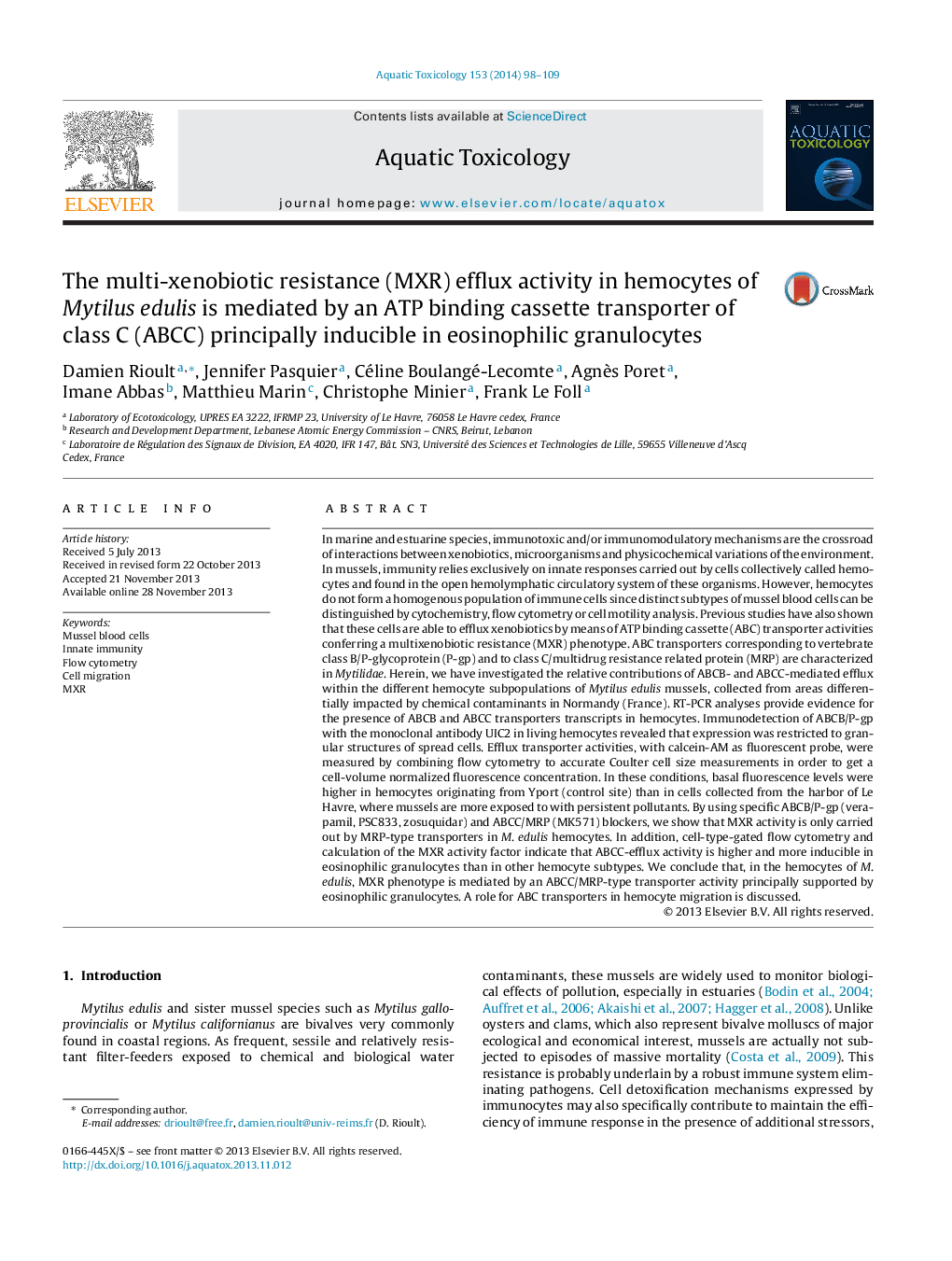| کد مقاله | کد نشریه | سال انتشار | مقاله انگلیسی | نسخه تمام متن |
|---|---|---|---|---|
| 4529324 | 1625952 | 2014 | 12 صفحه PDF | دانلود رایگان |

• We examine contributions of type B and C ABC activities in mussel hemocyte subtypes.
• Both transcripts and ABCB/P-glycoprotein are expressed.
• Treatment with blockers reveals the only role of ABCC/MRP activities.
• Comparison of control and polluted sampling sites reveals an inducible MRP efflux.
• MRP transport was mediated mainly by eosinophilic granulocytes.
In marine and estuarine species, immunotoxic and/or immunomodulatory mechanisms are the crossroad of interactions between xenobiotics, microorganisms and physicochemical variations of the environment. In mussels, immunity relies exclusively on innate responses carried out by cells collectively called hemocytes and found in the open hemolymphatic circulatory system of these organisms. However, hemocytes do not form a homogenous population of immune cells since distinct subtypes of mussel blood cells can be distinguished by cytochemistry, flow cytometry or cell motility analysis. Previous studies have also shown that these cells are able to efflux xenobiotics by means of ATP binding cassette (ABC) transporter activities conferring a multixenobiotic resistance (MXR) phenotype. ABC transporters corresponding to vertebrate class B/P-glycoprotein (P-gp) and to class C/multidrug resistance related protein (MRP) are characterized in Mytilidae. Herein, we have investigated the relative contributions of ABCB- and ABCC-mediated efflux within the different hemocyte subpopulations of Mytilus edulis mussels, collected from areas differentially impacted by chemical contaminants in Normandy (France). RT-PCR analyses provide evidence for the presence of ABCB and ABCC transporters transcripts in hemocytes. Immunodetection of ABCB/P-gp with the monoclonal antibody UIC2 in living hemocytes revealed that expression was restricted to granular structures of spread cells. Efflux transporter activities, with calcein-AM as fluorescent probe, were measured by combining flow cytometry to accurate Coulter cell size measurements in order to get a cell-volume normalized fluorescence concentration. In these conditions, basal fluorescence levels were higher in hemocytes originating from Yport (control site) than in cells collected from the harbor of Le Havre, where mussels are more exposed to with persistent pollutants. By using specific ABCB/P-gp (verapamil, PSC833, zosuquidar) and ABCC/MRP (MK571) blockers, we show that MXR activity is only carried out by MRP-type transporters in M. edulis hemocytes. In addition, cell-type-gated flow cytometry and calculation of the MXR activity factor indicate that ABCC-efflux activity is higher and more inducible in eosinophilic granulocytes than in other hemocyte subtypes. We conclude that, in the hemocytes of M. edulis, MXR phenotype is mediated by an ABCC/MRP-type transporter activity principally supported by eosinophilic granulocytes. A role for ABC transporters in hemocyte migration is discussed.
Journal: Aquatic Toxicology - Volume 153, August 2014, Pages 98–109